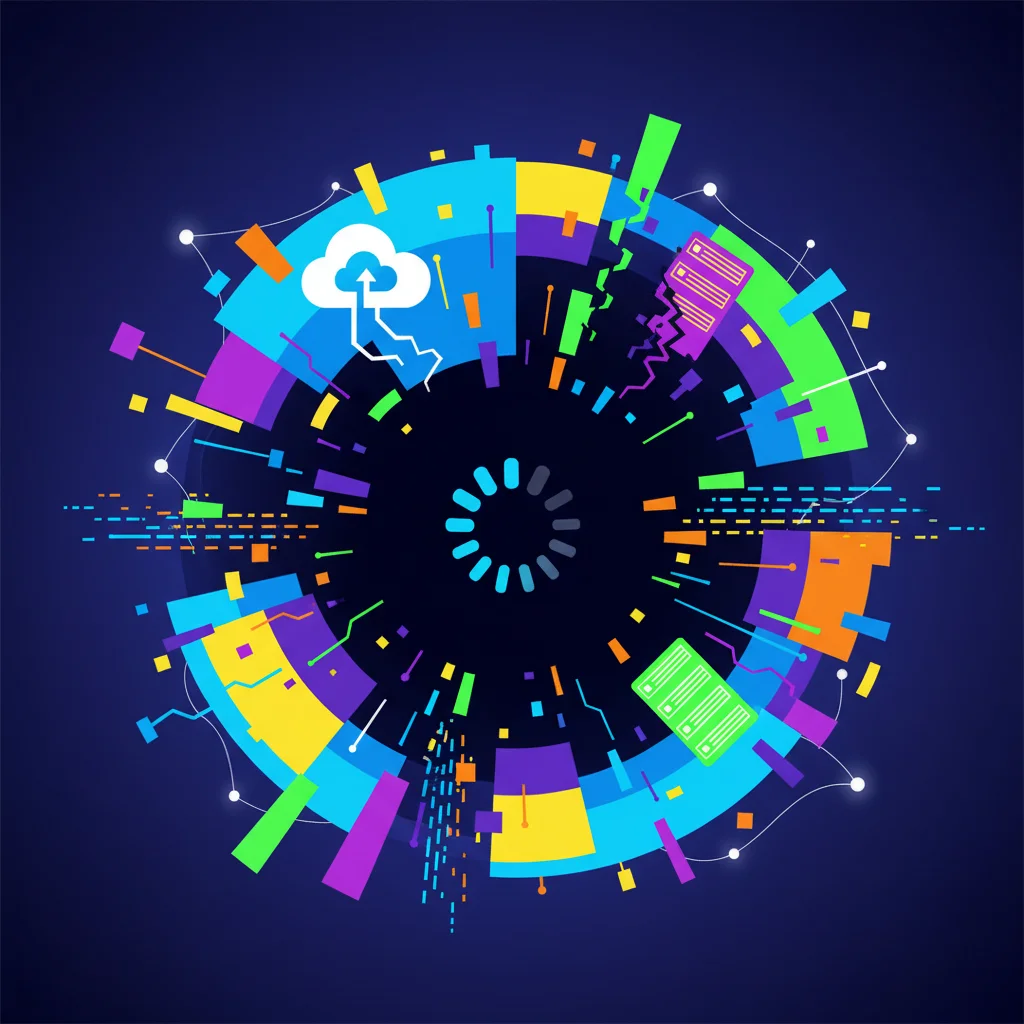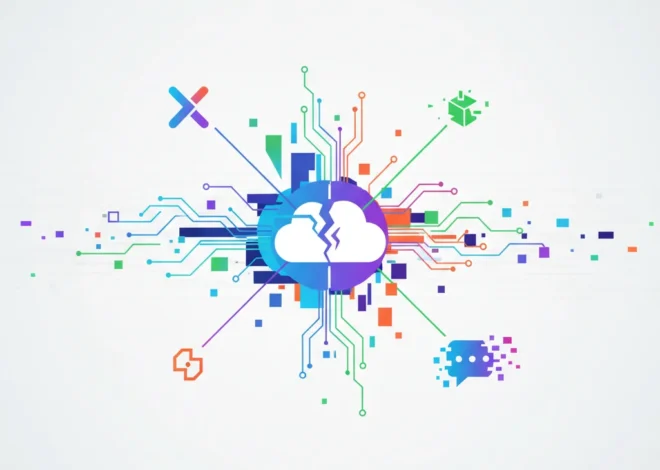
The Day the Internet Stumbled: What the Cloudflare Outage Reveals About Our Digital World
It’s a feeling we’ve all become reluctantly familiar with: you type a URL, hit enter, and… nothing. The loading spinner whirls into eternity, or you’re met with a stark error message. Your favorite productivity tool is down. The e-commerce site you were browsing is inaccessible. For a moment, it feels like a small corner of the internet has simply vanished. On days like this, the culprit is often a single, critical failure deep within the web’s foundational layers. Recently, one of those foundational pillars, internet infrastructure giant Cloudflare, experienced just such a problem, causing ripples across the digital landscape.
According to a brief report from the BBC, the company confirmed it was “working to understand the full impact of a problem which potentially ‘impacts multiple customers.'” While the statement is characteristically concise, the phrase “multiple customers” is a massive understatement when you’re talking about a company that handles a significant percentage of all internet traffic. This incident isn’t just a momentary glitch; it’s a powerful case study in the architecture of the modern internet, the hidden risks of centralization, and the critical role that technologies like artificial intelligence and automation must play in building a more resilient future.
What is Cloudflare and Why Does It Matter So Much?
To understand the gravity of a Cloudflare outage, you first need to understand what it does. For many, Cloudflare is an invisible force, working tirelessly in the background. Think of it as the internet’s ultimate middleman—a combination of a high-tech bouncer, a super-fast courier, and a translator, all rolled into one.
At its core, Cloudflare provides several key services:
- Content Delivery Network (CDN): It caches (stores) copies of websites on servers all over the world. When you visit a site, Cloudflare serves you the content from a server physically close to you, making websites load dramatically faster.
- DDoS Mitigation: It acts as a shield, absorbing malicious traffic from Distributed Denial of Service (DDoS) attacks, which aim to overwhelm a website’s servers and knock it offline. This is a cornerstone of modern cybersecurity.
- Web Application Firewall (WAF): It filters out hackers and malicious bots before they can ever reach a company’s actual server, protecting sensitive data and preventing breaches.
Millions of websites, from individual blogs to Fortune 500 companies, rely on this infrastructure. The ecosystem of modern software—especially the booming SaaS (Software as a Service) industry—is deeply intertwined with Cloudflare’s services. When it stumbles, it’s not just one website that goes down; it’s a cascade of failures across e-commerce, media, finance, and countless other sectors. This dependency makes every second of downtime incredibly costly, not just in lost revenue but in eroded user trust.
The EU's New Intelligence Hub: A Big Data Challenge or a Cybersecurity Nightmare?
Anatomy of a Cloud Outage
While the specific cause of this recent incident is still under investigation, large-scale outages in the cloud ecosystem typically stem from a few common culprits. These events are rarely simple and often involve a complex chain reaction. As noted by industry analysts at Gartner, the leading causes of downtime are often not malicious attacks but internal failures in process or technology (source).
Here’s a breakdown of the usual suspects behind major internet service disruptions:
| Cause of Outage | Description | Real-World Example |
|---|---|---|
| Configuration Error | A simple mistake made by a human engineer—a typo in a command, a misconfigured network route—that gets pushed to a global network, causing a cascading failure. This is often the most common cause. | The 2021 Fastly outage that took down major sites like Reddit, The New York Times, and the UK government’s website was caused by a single customer pushing a bad configuration. |
| Software Bug | A flaw in a new software update or an existing piece of code that only manifests under specific, large-scale conditions. The complex interactions in modern programming can create unforeseen bugs. | A 2017 AWS S3 outage was triggered by a typo in a command meant for a small number of servers, which accidentally took a much larger set offline. |
| Hardware/Network Failure | Physical equipment failure, such as a faulty router, a severed fiber optic cable, or a datacenter power loss. While providers have redundancy, a failure at a critical juncture can still cause widespread issues. | Localized outages are frequently caused by physical issues, such as construction crews accidentally cutting fiber lines. |
| Cybersecurity Attack | A sophisticated and massive DDoS attack or a targeted breach that manages to bypass security layers and disrupt core infrastructure services. | While less common for core infrastructure providers (who have robust defenses), large-scale attacks have targeted specific services or regions in the past. |
The Future is Automated: How AI is Fortifying the Cloud
How do we prevent these digital domino effects? The answer increasingly lies in leveraging artificial intelligence, machine learning, and sophisticated automation. Human engineers, no matter how brilliant, cannot monitor or react to the trillions of data points flowing through a global network in real-time. This is where machines excel.
The field of AIOps (AI for IT Operations) is at the forefront of this transformation. Instead of waiting for an alarm to sound after something has broken, AI models are now being used for proactive and predictive management. According to a report by MarketsandMarkets, the AIOps market is projected to grow significantly, driven by the need to manage increasingly complex IT environments (source). Here’s how this AI-driven approach is changing the game:
- Anomaly Detection: Machine learning algorithms constantly analyze network performance patterns. They can detect subtle deviations from the norm—a slight increase in latency, an unusual traffic pattern—that could be the earliest warning signs of a hardware failure or a brewing cybersecurity threat, long before they cause a full-blown outage.
- Predictive Maintenance: By analyzing historical data from millions of devices, AI can predict when a specific server, router, or switch is likely to fail. This allows engineers to perform maintenance or replace equipment before it ever becomes a problem.
- Automated Root Cause Analysis: When an issue does occur, sifting through logs to find the cause can take hours. An AI can correlate events across thousands of systems in seconds, pinpointing the initial configuration error or software bug that triggered the failure, drastically reducing resolution time.
- Intelligent Traffic Routing: During an attack or a partial outage, automated systems can instantly reroute traffic away from affected regions or data centers, minimizing the impact on end-users. This level of dynamic, real-time response is impossible at a global scale without automation.
The AI Gold Rush Hits a Reality Check: Why Wall Street’s “Boring” Money is Getting Nervous
Actionable Takeaways for Developers and Entrepreneurs
While core infrastructure providers work on their resilience, those of us building on top of the cloud have a responsibility to architect for failure. The mantra “anything that can go wrong, will go wrong” is the golden rule of distributed systems.
For startups and entrepreneurs, this incident is a lesson in dependency risk. While going all-in on a single provider is often the easiest path, exploring a multi-CDN or multi-cloud strategy for critical applications can provide invaluable redundancy. It’s not about avoiding great services like Cloudflare, but about having a Plan B.
For developers and tech professionals, this is a call to embrace resilient programming practices. This includes:
- Implementing Circuit Breakers: A design pattern that prevents your application from repeatedly trying to call a service that is down, which can prevent cascading failures within your own system.
- Graceful Degradation: Designing your application so that if a non-critical third-party service fails, the core functionality of your app can continue to operate.
- Robust Monitoring and Alerting: Don’t rely solely on your provider’s status page. Implement your own monitoring to understand how their issues are specifically impacting your application and your users.
The Chip War's New Frontline: Why a Dutch Power Play Could Reshape Global Tech
Ultimately, outages like the one at Cloudflare are not a sign of weakness but a reflection of the immense complexity of the system we’ve all built. They are inevitable, but they are also invaluable learning opportunities. Each incident pushes the industry towards greater resilience, drives further innovation in network management, and forces us to have critical conversations about the architecture of our increasingly connected world. The goal isn’t an internet that never fails—it’s an internet that fails gracefully, recovers quickly, and becomes stronger with every challenge, often with AI and automation leading the way.


